Five Essentials for EQ in Business
Optimizing Emotions for Performance

Emotions drive people. People drive performance.
Simple idea, but how? Tapping the latest research offers essential strategies.
As in any strategic planning, we spend resources to achieve an outcome. To effectively apply the value of emotional capital, leaders need to clarify the goal. What are we optimizing for? “A positive culture” isn’t specific enough. Nor is “happiness.” To gain the full benefit of emotional intelligence, leaders need to plan their culture — in service of their goals. Here are three expert views on how to design and implement this kind of “emotional capital strategy.”
Start with the big question: ‘What’s our purpose?’
When that answer is clear, you’ll know what you are trying to accomplish in our emotional capital strategy, and the type of culture that will sustain performance.”
Freedman says it’s a bit like when Alice in Wonderland asked the Cheshire Cat for directions. “Where do you want to go,” asked the cat. “I don’t know,” said Alice. “Then it doesn’t matter which path you take.”
So where do you need your organization to go? Just for example, suppose innovation is the goal. What conditions must exist in the organization to achieve this? People will need to collaborate and come together from disparate areas to cross pollinate ideas and bring forward solutions that have never been seen before. To get this level of flow between people, high trust will be essential. Therefore, the company will need to select and develop leaders with powerful trust-building capabilities.
But it’s not a 1-size-fits-all formula. “You can not optimize for all aspects of culture,” Freedman admonishes, “pick your top priority and fully invest in that.”
INSIGHT 1:
Link Culture,
Strategy & Purpose

Joshua Freedman on Culture
Joshua Freedman is the CEO and cofounder of Six Seconds, the global community for emotional intelligence. His best advice to leaders?
What’s the “ideal temperature” for your organization?
Who’s taking responsibility to make it so?
When Chip Conley was CEO of Joie de Vive, California’s largest boutique hotel group, he described his CEO job as “chief emotions officer.” Conley, who went on to become Head of Global Hospitality & Strategy at AirBnB, says that leaders are the “emotional thermostats.” The question, is, what “temperature” will be optimal?
Freedman: “For our own org, at this stage, I’m optimizing for ownership. We’re working to build a community to support a billion people to practice emotional intelligence. To do so, I’m 110% clear that requires an unprecedented level of engagement from our team and members.
Against that criteria, I make decisions that will fuel emotions of commitment, passion, optimism, determination… feelings that will support a culture of shared ownership. Building this core of ‘co-owners of the vision’ is the only way we can achieve our goals.”
While “ownership,” “engagement,” or “empowerment” sound enticing, Freedman says that orgs need to pick ONE priority for culture. “Depending on your strategy, identify the top priority of the culture. For example, if your strategy requires innovation, don’t try to have a rule-oriented culture. But if your strategy is about consistency, don’t try to have a risk-oriented culture.”
“Once the overall emotional capital strategy is clear,” Freedman says, “then we can use emotional intelligence to identify tactics and leadership skills to make it happen.”
In the 2020 Workplace Vitality research, we saw how emotional intelligence is directly linked to this kind of people-focused leadership — trust, optimism, and entrepreneurship emerged as keys:
Trust offers the safety to risk.
Optimism offers options to try.
Entrepreneurship asks leaders to take ownership.
Freedman offers three “must answer” questions to start your emotional capital strategy:
- What’s your purpose?
- What is the key strategy that you will pursue to achieve that purpose?
- What is the one emotional and cultural norm that’s going to most powerfully support that strategy?
Leadership is how to turn strategy into action. Get the latest Organizational Vitality research to see how
INSIGHT 2:
Optimizing for Engagement
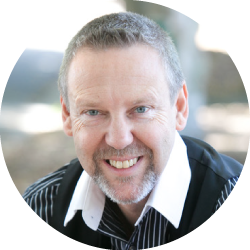
Eldon Pasco on Engagement
Eldon Pascoe is former Director of Professional Development at the British Council, where he led the team for corporate training and leadership programs across the world.
Pascoe says employee engagement is one of the most critical success factors for businesses in the region.
The bad news is that according to Gallup, only 9% in the Asia Pacific workforce is engaged.
Mr. Pascoe advises leaders to attend to three key areas:
1. You want to be sure that people have meaning and understanding in what their role is in the organization. Do they make a difference?
- Most of us also want to have a feeling of mastery. Identifying and developing people’s strengths create an advantage in the workplace.
- Lastly there is autonomy. People want to feel like they have some control. Some ownership in their day to day life in the workplace.”
Mr. Pascoe refers to research from The Vital Organization, which his team applied in a highly successful management training programs.
He’s seen it work: “If a leader can master these three areas then they can really have an effect on engagement.”
What's the latest research on organizational vitality?
INSIGHT 3:
Optimizing for Trust
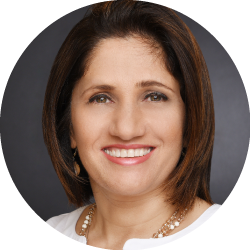
Nehad Tadros on Trust
Nehad Tadros is an executive coach; former Global Coaching and Leadership Development Director at Aramex, the largest logistics company in the Middle East.
One of Tadro’s top priorities is increasing trust. To do so, she says, leaders need to start with themselves. “Leaders need to be aware of how their emotions drive their own patterns of behavior.” She points out that without this awareness, leaders will not effectively communicate, solve problems, or influence.
“Self-reflection is the ability to evolve,” Tadros says. We are not purely rational, so we need to notice how our own feelings, thoughts, and actions are working (or not working) together. “For example, do you notice how you balance the head with the heart when giving feedback to your team?” Tadros advises leaders to learn to ask questions about emotions and behavior. “You can ask a trusted peer, or your team members,” she says, but what’s essential is to begin to get feedback about your own patterns of behavior. Tadros says that when leaders begin to cultivate this awareness, trust and communication grows because, “you show your team your openness and willingness to change positively – which would impact the team positively as well.”
How will you design and implement an “emotional capital strategy?”
Start here with the latest research on organizational vitality
Low’s clients are looking for a competitive advantage to improve their effectiveness and business performance, especially in the areas of customer service and sales. Low finds “as the demands for great customer experience grows, the demand for service professionals to achieve a level increased self-awareness of their emotions accelerates.”
Low points to EQ as key to service:
“The most effective service professionals have very strong emotional intelligence competencies like navigating emotions for a more positive outcome (service recovery) and empathy (ability to listen and sense how others feel).”
INSIGHT 4:
Optimizing
for Loyalty

Jonathan Low
works with executives and organizations in Asia Pacific and the Middle East, focusing on the premise that increased self-awareness accelerates success.
When organizations onboard EQ, their customer service performance and engagement increases. It’s a positive cycle. Low explains “Increasing self-awareness has direct results, helping engage better with clients, building more customer loyalty and achieving higher sales.”
Low advises leaders who want to build a great customer engagement and experience, to ask teams to “think of a personal experience of what was great. What was it about that engagement? Can they recognize those emotions? Can you do more of that? We can translate positive emotions into a higher memorable experiences for our clients and get loyalty as a result.”
INSIGHT 5:
Leaders Go First
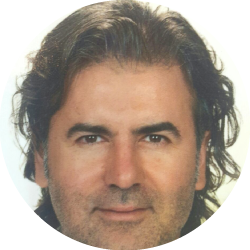
Erdem Ercan on Performance
Erdem Ercan, CEO of Hayatin Ritmi, a Six Seconds Partner in Istanbul, Turkey
Once we know where we’re trying to set that “emotional thermostat,” how do individual leaders actually make it happen? Ercan says the first step is for leaders to be rational enough to accept that humans are not just rational.
“In business and life,” says Ercan, “performance is fueled by drivers that are underneath the surface. Emotions are constantly there, affecting all our thoughts and actions. Even we deny their existence or we don’t want to see them, emotions are propelling us, and all our employees.”
Erdem cites the 2017 Vitality research as a case in point. The study found that across 95 countries, when asked to categorize organizational challenges as “rational/technical” or “emotional/relational,” just over 70% of the most pressing organizational issues are in the emotional domain.
Ercan’s conclusion is straightforward: “If you want performance, you need to understand what’s really driving your team. Then work with those emotions effectively.”
He suggests that the starting point is simple: Just ask. “The challenge,” Ercan says, “is doing this without judging or reacting, otherwise they won’t be honest… or won’t be honest again.” For example, he says, start a management meeting by asking, “How are people feeling about the project right now?” While some managers have a hard time accurately answering, with just a little practice, they become more skilled.
“By surfacing this data,” Ercan continues, “we start getting the messages of emotions, which gives us an important perspective. At the same time, genuinely asking this question leads team members to see the leader’s commitment to them as people.”
This article was updated from Oct 2, 2017 to include new insights from the Organizational Vitality Research
Get the latest research on organizational vitality
What’s new in emotional intelligence?
Emotional Intelligence at Work: The Free, Easy Win Most Managers Are Missing
Gallup study compares the biggest gaps in employee vs. manager perceptions. What are managers’ worst blind spots? What are easy wins they could do better to improve team performance?
Emotional Intelligence at Work: Is There Hope for Toxic Workplaces?
The remarkable transformation at Westcomm Pump offers a blueprint for turning around workplaces with depleted morale and trust issues, using the Team Vital Signs assessment.
Gen Z Is Unlike Any Generation Before It. New Research Reveals Why – and How to Work More Effectively with the iGen
Here are 3 key insights from the world’s largest study of emotional intelligence, and what it means for working effectively with Zoomers.
Emotional Intelligence at Work: Stress Is (Still) Rising Globally. Here Are 3 Evidence-Based Solutions
Globally, 44% of employees globally reported feeling stressed A LOT of the day yesterday. Here are 3 solutions to reduce stress.
Emotional Intelligence at Work: 3 Steps to End Meeting Madness and Its Emotional Toll
The modern workplace has a meeting problem, and it takes an emotional and financial toll on people. Here are 3 steps to restore sanity.
Emotional Intelligence at Work: 7 Principles to Rewrite the Unwritten Rules of Expressing Emotions
An organization’s emotional culture influences employee satisfaction, burnout and the bottom line. Is it time to rethink your rules?







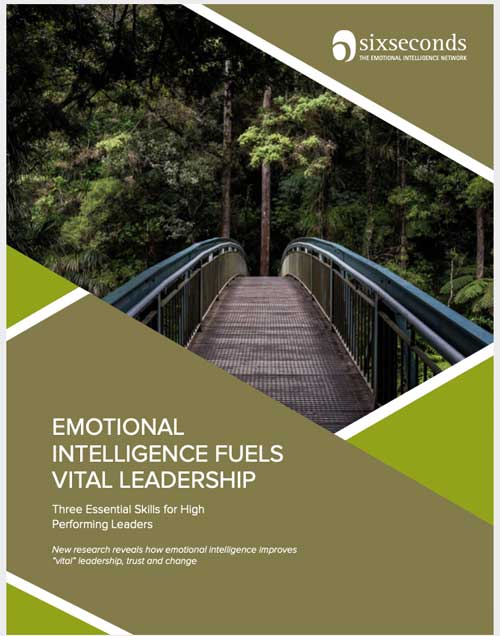
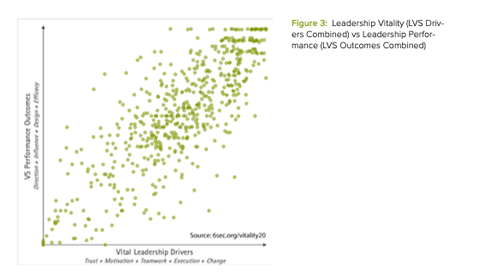
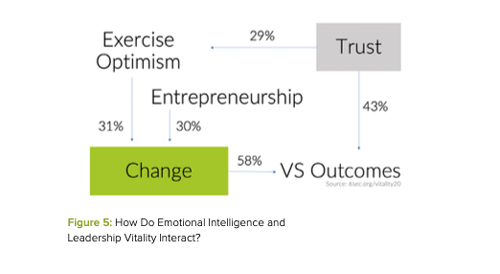
i want to know how to know 90% performance intrinsic since covid19
very Interesting. Would love to know how exactly issues and challenges have a turn around .
Dear SISSECONDS,
I look forward to reading your News Letters.
FABULOUS article Patty, thank you!